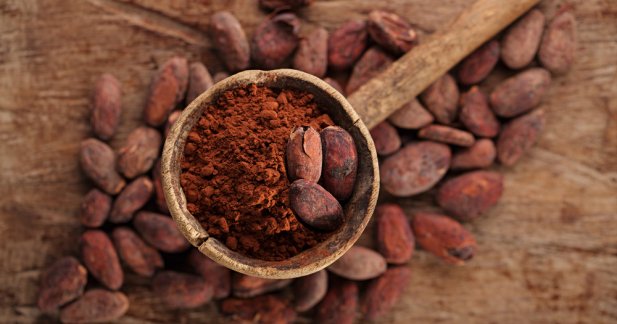
Cacao In The Philippines – The Birth Of Tsokolate
February 21, 2022
Ever wonder how chocolate was discovered in your country?
Chocolates originated from the tropical rainforests of Central America, were discovered by the Europeans, and were introduced to the Philippines by the Spaniards. Since then, the country has developed its love affair with chocolates especially due to the country’s competitive advantage in location and climate.
And the rest is history -- where the country's love for hot chocolate started.
This history happened in 1670 when the first cacao seeds were brought to the Philippines. With the country being once a colony of Spain, there was a time when the Catholic hierarchy controlled the agricultural land and the crops that would be cultivated in them. One of these crops was cacao.
Origins of Cacao in the Philippines
Cacao is perfect for long travels back to Europe during the export, and in return, the Philippines has somehow discovered their love for chocolates.
In fact, cacao as a crop is a lot different than eating a chocolate bar nowadays. The Spanish method of consuming chocolates in the past is actually through drinking it! And this is how Spaniards learned it from the Aztecs, whose tradition is preparing chocolate as a drink.
Cacao plantations have started growing in numbers. This is why Spain needed additional manpower to plant and harvest them, therefore, making cacao farming a part of Filipino farmers’ lives. It has influenced them greatly that even after their independence they still continued the production of Cacao.
Filipinos have adopted the Spanish way of consuming chocolates, which is in the form of a drink. They made this by mixing water and tablea.
What is Tablea?
Tablea is 100% pure cocoa that has been ground to form small balls. These are made by grinding peeled cacao seeds using stones until a paste is formed, and then forming them into small balls. To consume them, just add one of the balls into boiling water and stir. Through this, the traditional way of making hot chocolate was born, which was called sikwate.
Sikwate is very different from the powdered chocolate mix drinks that we have today because those instant packages now contain milk and sugar plus a whole lot of other ingredients. Sikwate in the old times is made from pure tablea, which can make it taste rich but bitter, depending on how much water you add to the mix.
Did you know that in the old times, you have to come from a respectable background and be deemed worthy in order to be served a cup of sikwate? This is because, in the old times, only the rich can have access to these crops so only those with reputable backgrounds can consume them. It has been the traditional Filipino way of consuming chocolate since it arrived in the country.
Chocolate Consumption in the Philippines
Nowadays, chocolate consumption in the Philippines has evolved in so many ways that even the name “sikwate” has changed to “tsokolate” which is the Filipino word for chocolate. Even tablea has changed in a way that most of the pure cocoa brands that can be found in the market are not 100% pure anymore. So, it’s best to read that packaging and ingredients list before buying one.
In fact, not many pure homegrown cocoas can be found in its capital city Manila. Most of the plantations are located in the provinces as well as in the far islands of Mindanao, more specifically in Davao City. There have also been challenges in the production of tablea, including the shortage of cacao trees. Many of the large cocoa farms have been broken up due to land redistribution, and at the same time, new varieties of cacao seeds arrived from different parts of Asia.
In addition, Mars Chocolate Company also started buying lots of Filipino cacao and even taught the farmers how they wanted the cacao they bought to be processed. This resulted in an increase in quickly-processed cacao and low prices. Thus, decreasing the value of cacao to the farmers.
Filipino Chocolate Brands
Through the years, Filipinos have associated cacao as tablea and not as commercialized chocolate. However, in recent years, many Filipino chocolate makers have emerged to introduce their very own Pinoy-made (Pinoy is a local term for the word Filipino) chocolate bars. To name a few are Auro Chocolate and Malagos Chocolate.
Malagos harvests their cacao on their own farm in Davao City and turns them into 100% pure dark chocolate. Both Malagos and Auro Chocolates have a tree-to-bar process, meaning all the processes involved in producing their chocolates starting from the cultivation of the trees up to the processing and packaging of their chocolates are being controlled by them.
With the increase in the number of Filipino chocolate makers, one can dream that we will be seeing a lot of Filipino chocolate brands in the future.
How about you? Do you want to give sikwate a try? I know I do!

You'll get 52 chocolate recipes you can make to impress your friends (and a bonus recipe that you put on your face instead of in your mouth). The Recipes Of CUO ebook represents some of the favorite recipes we have published over the years.
CLICK HERE to get a FREE copy!
- Easy Chocolate Easter Nests Recipe - April 15, 2025
- The Best Chocolate Gifts for Easter (That Everyone Will Love!) - April 8, 2025
- National Chocolate Mousse Day: How to Make the Perfect Chocolate Mousse - April 1, 2025



When Mars, Inc. organized the Mars Cocoa Development Center (MCDC) at Puentespina Farm in 2008, it became a building block of the cacao industry of the Philippines. Over 10,000 farmers and visitors were trained by the center that ended in 2014. Thus, INCREASING THE VALUE of cacao to the farmers.
Chocolate makers value their products for profit. The people behind MCDC value cacao for the farmers productivity.